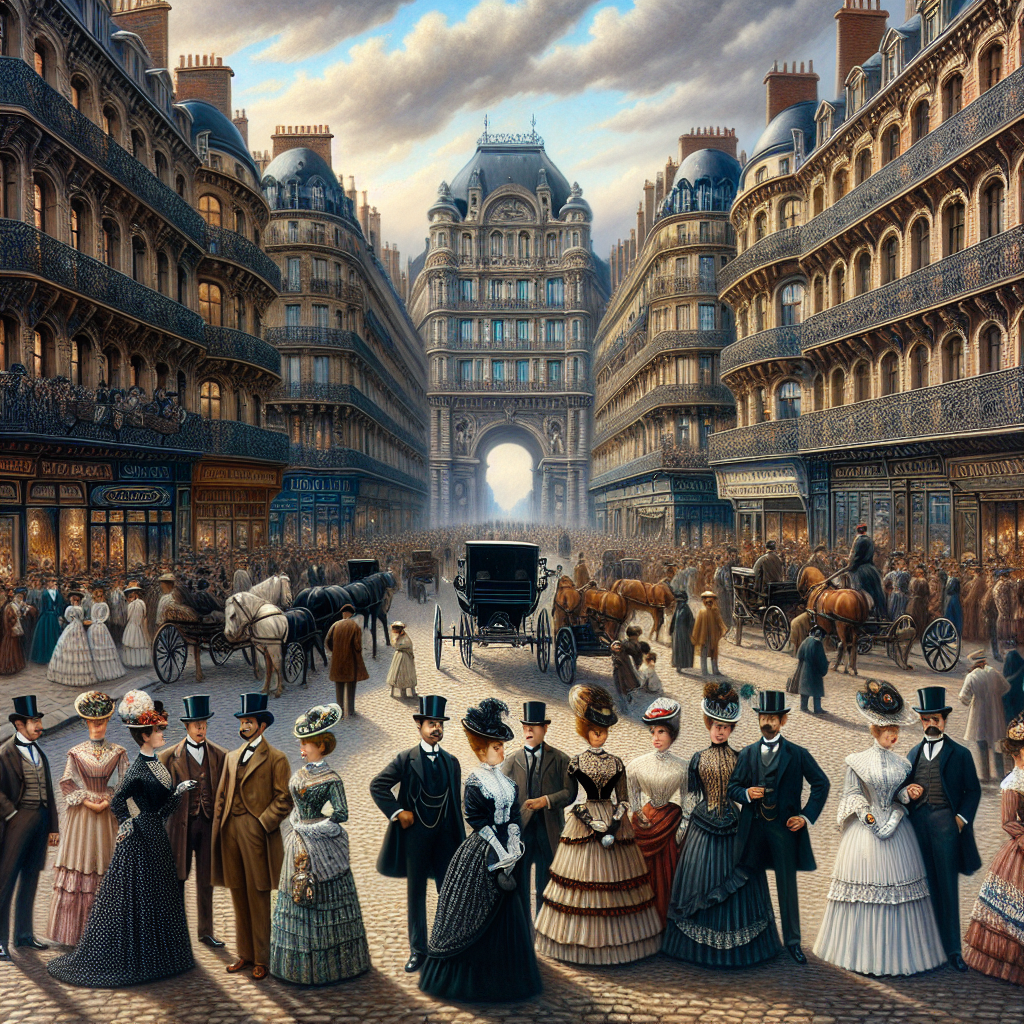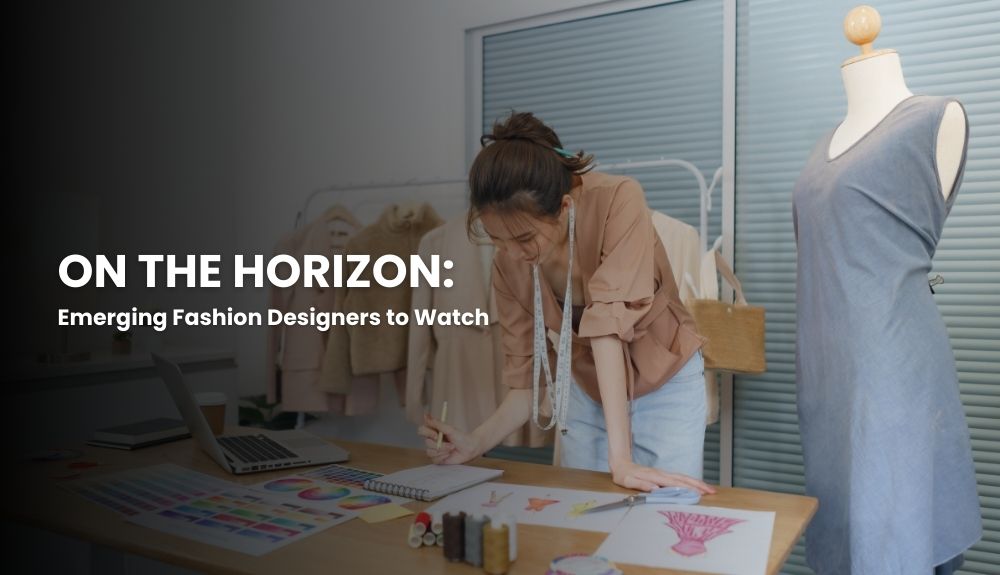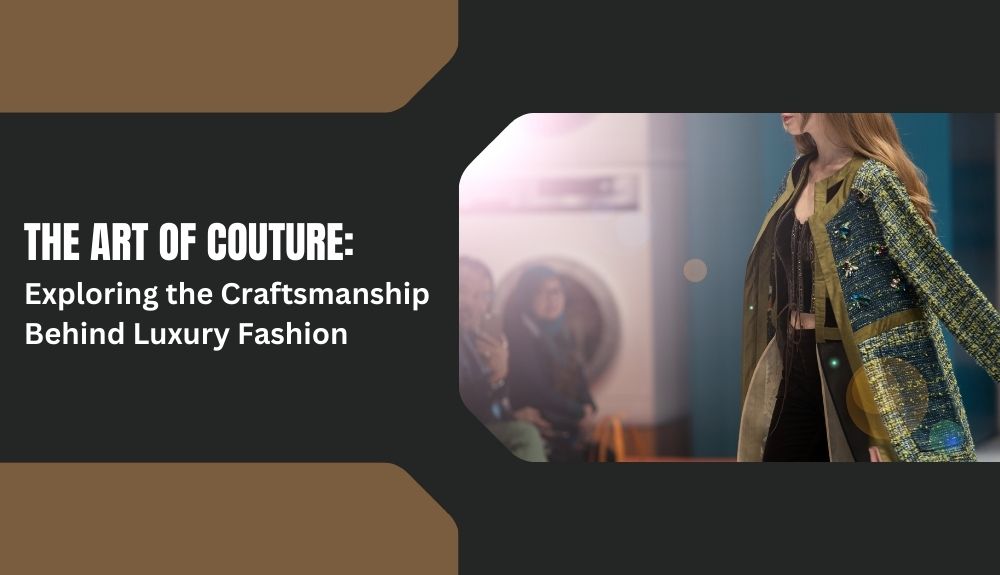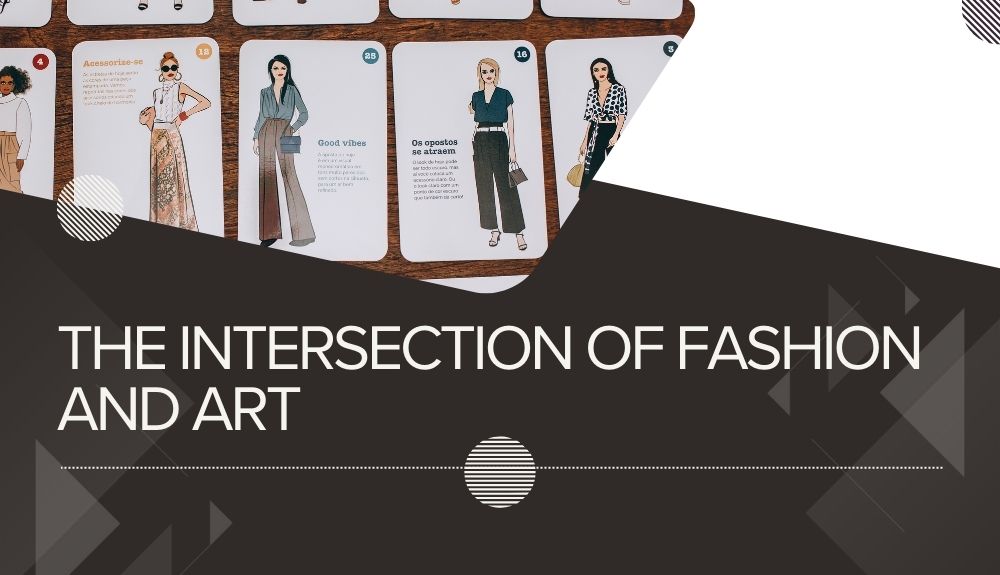Unleashing Creativity: The Intersection of Fashion and Art
Are you ready to embark on a journey that explores the fascinating fusion of art and fashion? Imagine a world where creativity knows no bounds, where unique prints and avant-garde creations come to life on the runway. Welcome to the captivating realm of fashion design, where masterpieces are crafted with stitches and fabrics, and where artistic expression meets sartorial ingenuity.
In this eye-opening blog, we will dive deep into the creative process that drives fashion designers, uncovering the techniques, inspirations, and business skills that shape their unique creations. From the intersection of art and fashion to the incorporation of innovative technology, we will explore the dynamic landscape of this ever-evolving industry.
Discover the secrets behind fashion design’s use of art-inspired prints, the role of technology in creating virtual reality fashion exhibitions, and the growing concern of sustainability in the fashion world. Gain insights into the business side of fashion design, including marketing, branding, and the career outlook for aspiring designers.
Join us as we unravel the threads of the fashion industry, unleashing the boundless creativity that lies at its core. Get ready to be inspired, informed, and amazed by the artistic visions that shape the global fashion landscape.
Introduction to the Art of Fashion Design
Fashion design is more than just creating clothing; it is a form of art that combines creativity, innovation, and self-expression. In this section, we will delve into the captivating world of fashion design, exploring its artistic nature, the inspiration behind it, and the tremendous impact it has on our lives.
Fashion designers are true artists, using fabric and thread as their canvas, and stitching together their imaginative visions to create stunning and unique pieces. They draw inspiration from various sources, including art, nature, culture, history, and even their own emotions. Fashion designs can be inspired by the mesmerizing paintings of Vincent Van Gogh or the geometric shapes found in modern architecture. The possibilities are endless, and fashion designers are constantly pushing boundaries and thinking outside the box to create innovative designs that captivate our imagination.
Creativity is at the core of fashion design, with designers leveraging their skills to create beautiful garments that evoke emotions and make powerful statements. Each garment tells a story, reflecting the designer’s artistic vision and personal style. From avant-garde creations that challenge societal norms to gender-neutral fashion that promotes inclusivity, fashion design allows artists to express themselves on a larger canvas.
Fashion design encompasses more than just aesthetics; it is a complex and iterative process that involves sketching, pattern-making, fabric selection, and garment construction. It requires technical skills and attention to detail, ensuring that the design translates seamlessly into a wearable piece. Fashion designers must have a solid understanding of the construction techniques and materials to bring their artistic vision to life.
In the next sections, we will dive deeper into the intersection of creativity and business in fashion design, explore the creative process from sketch to finished garment, and discuss the crucial role of technical skills in creating high-quality fashion designs. Join us on this journey into the fascinating realm where art and fashion collide, and discover the captivating world of fashion design.
The Intersection of Creativity and Business in Fashion Design
Fashion design is a captivating art form that merges creativity with the necessary business acumen. In this dynamic industry, the seamless integration of both aspects is essential for success. The intersection of creativity and business in fashion design creates a powerful synergy that drives the industry forward.
Creativity lies at the heart of fashion design. It fuels the innovation, imagination, and artistic expression that bring captivating designs to life. Fashion designers are visionaries, constantly pushing boundaries and challenging norms. They draw inspiration from a myriad of sources, including art, culture, nature, and personal experiences. The ability to think outside the box and create unique visual appeals is what sets designers apart.
However, creativity alone is not enough to thrive in the fashion industry. The business side of fashion design plays an equally significant role. Fashion designers must possess a solid understanding of marketing strategies, branding techniques, and financial aspects. They need to identify target markets, create viable business plans, and establish their unique identity in the highly competitive landscape.
Successful fashion designers strike the right balance between creativity and business prowess. They understand that their artistic vision needs to be supported by a sustainable business model. By combining their unique design aesthetic with a strategic approach, designers can effectively navigate the global industry.
The fashion industry is ever-evolving, driven by market demands, consumer trends, and technological advancements. Designers who can embrace change and adapt their creative vision to market needs have a distinct advantage. By staying abreast of emerging trends and utilizing innovative collaborations, fashion designers can remain at the forefront of the industry.
The intersection of creativity and business in fashion design is a delicate dance. It requires designers to be both artists and entrepreneurs. By harnessing their artistic instincts and combining them with sound business strategies, designers can create groundbreaking designs that captivate audiences and establish their place in the fashion world.
Aspiring fashion designers must recognize the importance of mastering both the creative and business aspects of the industry. It is through this intersection that they can unlock endless possibilities and unleash their true potential. The fusion of creativity and business creates a powerful force that propels the fashion industry forward, making it an exciting and thriving career path for those with a passion for art and commerce.
Exploring the Creative Process: From Sketch to Finished Garment
Fashion design is a captivating journey that starts with an idea and culminates in a beautifully crafted garment. The creative process behind fashion design involves a series of carefully orchestrated steps that transform a concept into a tangible masterpiece. From the initial sketches to the final product, let’s delve into the different stages of this artistic journey.
1. Inspiration and Concept Development
Every fashion creation begins with inspiration. Whether it’s a painting, nature, or personal experiences, designers draw from diverse sources to ignite their creative spark. The initial concept is developed, taking into consideration factors such as the target audience, season, and desired aesthetic.
2. Sketching and Rendering
With the concept in mind, designers translate their vision onto paper through sketching. These preliminary sketches capture the essence of the garment, depicting the silhouette, proportions, and key design details. To bring their ideas to life, designers often use pencils, markers, or digital tools.
3. Fabric Selection and Material Exploration
Fabric plays a vital role in fashion design, as it contributes to the overall look and feel of the garment. Designers carefully choose materials that align with their design concept, considering factors such as texture, color, and drape. Material exploration allows designers to experiment with different fabric combinations and techniques.
4. Pattern Making and Draping
Once the sketches are finalized and materials are chosen, the next step is pattern making. Patterns serve as the blueprint for cutting and constructing the garment. Designers create patterns based on their designs and then use them to cut fabric pieces. Alternatively, designers may experiment with draping fabric directly on a mannequin to create unique silhouettes.
5. Garment Construction and Tailoring
With the patterns and fabric ready, the garment construction process begins. From stitching seams to attaching zippers and buttons, skilled artisans bring the design to life. Attention to detail and precision in tailoring ensure that the garment fits flawlessly and meets the designer’s vision.
6. Fittings and Adjustments
Throughout the garment’s creation, fittings play a crucial role in refining the design. Models or dress forms are used to assess the fit, proportions, and overall aesthetics. Adjustments are made based on feedback and the designer’s creative instincts, ensuring that the garment achieves the desired look and feel.
7. Embellishment and Finishing Touches
To elevate the design, designers may add embellishments such as embroidery, beading, or appliques. These intricate details bring depth and visual interest to the garment, enhancing its overall appeal. The finishing touches, such as steaming, pressing, and quality checks, ensure that the garment is impeccable before it reaches the market.
The creative process of fashion design is a testament to the fusion of artistry and technical skills. From the initial spark of inspiration to the meticulous craftsmanship, each stage contributes to the creation of a stunning garment that reflects the designer’s unique vision.
Remember, fashion is an art form that continually evolves, and the creative process adapts to the latest trends and innovations. Embrace the limitless possibilities and let your imagination soar as you embark on your own fashion design journey.
The Role of Technical Skills in Fashion Design
Technical skills play a crucial role in the world of fashion design, contributing to the quality, craftsmanship, and overall success of garments. These skills encompass a wide range of abilities that are essential for turning creative concepts into tangible creations. From pattern-making to sewing techniques, here we explore the importance of technical skills in the fashion design process.
Precision in Pattern-Making
Pattern-making is a fundamental technical skill that enables designers to create templates required for constructing garments. With precise measurements and attention to detail, patterns serve as the blueprint for bringing a design to life. The ability to accurately translate a vision into a well-fitting garment lies in the hands of proficient pattern-makers.
Expertise in Sewing Techniques
Meticulous sewing techniques are paramount in achieving a high level of quality and craftsmanship. Seam construction, hemming, and finishing touches require expertise to ensure durability and a professional finish. A deep understanding of fabric properties and the ability to manipulate materials are crucial for executing intricate details and structural elements.
Technical Proficiency in Textile Selection and Manipulation
Technical skills in textile selection and manipulation involve in-depth knowledge of various fabrics and their characteristics. Designers must possess the ability to match fabrics with designs to achieve the desired aesthetic and functionality. Expertise in techniques such as draping, pleating, and tailoring empowers designers to create unique and innovative designs.
Utilizing Technology in Design
Advancements in technology have revolutionized the fashion industry, providing designers with a powerful set of tools to enhance their technical skills. Computer-aided design (CAD) software allows for precise digital pattern-making and 3D visualization, enabling designers to experiment with different design elements before creating physical prototypes. Virtual reality (VR) technology also offers immersive experiences, allowing designers to visualize their creations in simulated environments.
In conclusion, technical skills are an integral part of fashion design, ensuring the quality, precision, and craftsmanship of garments. From pattern-making to sewing techniques and the utilization of technology, these skills empower designers to bring their creative visions to life. By combining artistic flair with technical proficiency, fashion designers are able to create garments that not only capture attention but also stand the test of time.
Marketing and Branding in the Business Side of Fashion Design

In the fast-paced and ever-evolving fashion industry, marketing and branding play a crucial role in establishing successful fashion brands. Effective marketing strategies not only promote fashion collections but also cultivate a unique identity that resonates with the target audience. By leveraging the power of branding, fashion designers can create a strong presence in the competitive market and drive customer loyalty. Let’s delve into the key strategies that are essential for building a successful fashion brand.
Creating a Compelling Brand Story
Crafting a compelling brand story is the foundation of successful marketing in the fashion industry. By communicating the brand’s values, inspiration, and unique vision, designers can establish an emotional connection with their audience. Whether it’s a story of sustainability, inclusivity, or avant-garde creations, a well-crafted brand story resonates with fashion enthusiasts and helps differentiate the brand in the crowded marketplace.
Developing a Consistent Visual Identity
A strong visual identity is a hallmark of successful fashion brands. From logos and color palettes to typography and imagery, every visual element should align with the brand’s overall aesthetic and message. Consistency across all marketing channels, including websites, social media platforms, and advertising campaigns, helps reinforce brand recognition and build a distinct brand image.
Leveraging Influencer Collaborations
Influencer collaborations have become a powerful marketing tool in the fashion industry. Partnering with social media influencers and bloggers who align with the brand’s values and target audience can significantly amplify brand visibility. By showcasing the brand’s products and sharing their unique perspective, influencers can create authentic connections with their followers and drive interest in the fashion brand.
Embracing Digital Marketing Strategies
In today’s digital age, fashion brands must embrace various online platforms to reach their target audience effectively. From search engine optimization (SEO) to social media marketing and email campaigns, digital marketing strategies help expand brand reach and engage with fashion enthusiasts globally. Utilizing innovative technologies such as augmented reality, virtual reality, and interactive digital experiences can further enhance brand storytelling and captivate the audience.
Nurturing Customer Relationships
Building strong customer relationships is essential for long-term success in the fashion industry. By fostering open communication channels, responding to customer feedback, and providing exceptional customer service, fashion brands can create a loyal customer base. Engaging customers through personalized experiences and exclusive offers not only strengthens brand loyalty but also generates positive word-of-mouth, further expanding the brand’s reach.
In the highly competitive business side of fashion design, effective marketing and branding strategies are vital for establishing a successful fashion brand. By developing a compelling brand story, maintaining a consistent visual identity, leveraging influencer collaborations, embracing digital marketing strategies, and nurturing customer relationships, fashion designers can create a strong presence in the industry and cultivate a loyal customer base.
Fashion Design and Sustainability: A Growing Concern
As the fashion industry continues to evolve, sustainability has become a paramount concern. With the growing awareness of environmental issues and ethical considerations, fashion designers are increasingly embracing sustainable practices. The industry’s impact on the environment is undeniable, from the excessive use of water in production processes to the generation of textile waste.
The Environmental Impact of the Fashion Industry
Fashion is known for its fast-paced nature, with trends changing rapidly and consumers constantly seeking the latest styles. However, this “fast fashion” culture often leads to overconsumption and the disposal of garments that have barely been worn. The result is a significant strain on natural resources and increased pollution.
Ethical Considerations in Fashion Design
In addition to the environmental impact, the fashion industry has also faced scrutiny for its treatment of workers. Sweatshops and poor working conditions have been prevalent in the past, but there is a growing demand for fair labor practices and ethical sourcing. Consumers are increasingly conscious of the origins of their clothing and are seeking brands that prioritize transparency and accountability.
Embracing Sustainable Practices
To address these concerns, fashion designers are incorporating sustainable practices into their design processes. This includes using organic and recycled materials, reducing waste through careful pattern cutting techniques, and implementing innovative production methods that minimize environmental impact. Brands are also exploring alternative dyeing methods and exploring more sustainable packaging options.
The Role of Education and Collaboration
Addressing sustainability in fashion design requires a solid understanding of the environmental and ethical issues at hand. Designers are now seeking out educational opportunities that focus on sustainable fashion and are collaborating with experts in the field to gain insights and guidance. Through these partnerships, designers are able to make informed decisions and create garments that are both fashionable and eco-friendly.
A Shift towards Conscious Consumerism
As consumers become more aware of the impact of their choices, there is a growing demand for sustainable fashion. This shift in consumer behavior has led to an increase in the availability of sustainable clothing options and a focus on creating timeless pieces that can be worn for years to come. Brands that prioritize sustainability are gaining popularity and are driving change within the industry.
In conclusion, sustainability is no longer just a buzzword in the fashion industry; it is a growing concern that designers cannot ignore. By embracing sustainable practices and educating themselves on the environmental and ethical considerations, fashion designers have the power to make a positive impact on the industry and create a more sustainable future.
The Role of Technology in Fashion Design
In today’s fast-paced world, technology has revolutionized various industries, and the field of fashion design is no exception. Advancements such as computer-aided design (CAD) and virtual reality (VR) have opened up a realm of endless possibilities, transforming the way designers conceptualize, create, and showcase their designs. This section will delve into the innovative use of technology in fashion design, highlighting the impact it has had on the industry.
Computer-Aided Design (CAD): Redefining the Creative Process
Gone are the days when fashion designers relied solely on traditional sketching methods. CAD, a software application specifically designed for fashion design, has simplified and streamlined the design process. Designers can now create digital sketches with precision and accuracy, experimenting with colors, patterns, and styles effortlessly. CAD enables designers to visualize their creations in a three-dimensional space, offering a realistic representation of the final garment even before it is produced. This technology has significantly reduced the time and resources needed for prototyping, allowing designers to iterate and refine their designs more efficiently.
Virtual Reality (VR): Stepping into a Digital Runway
Imagine being transported into a virtual world where you can view and experience fashion collections firsthand. Virtual reality has brought this concept to life, offering an immersive and interactive platform for showcasing designs. Fashion designers can now create virtual fashion shows, where viewers can explore the garments from every angle, observe intricate details, and even interact with the virtual models. VR has not only revolutionized the way fashion shows are presented but has also extended the reach of designers, allowing them to connect with a global audience through online platforms and social media.
Innovation and Collaboration: Pushing Boundaries
Technology has also fostered new opportunities for collaborations and creative synergies in the fashion industry. Designers can now collaborate with tech experts to incorporate innovative technologies into their designs. From incorporating 3D-printed elements to integrating wearable tech into garments, these collaborations have resulted in groundbreaking designs that seamlessly blend artistry and functionality. The intersection of technology and fashion has also given rise to gender-neutral fashion and avant-garde creations, encouraging self-expression and pushing the boundaries of traditional design norms.
In conclusion, technology has become an indispensable tool in the world of fashion design. The use of computer-aided design and virtual reality has revolutionized the creative process, enabling designers to bring their visions to life with greater efficiency and precision. Furthermore, the innovative use of technology has inspired collaborations and opened up new avenues for artistic expression. As the fashion industry continues to evolve in the digital age, the incorporation of technology will remain a driving force behind its growth and creativity.
Fashion Design as a Career: Education and Job Outlook
The world of fashion design offers a unique blend of creativity, innovation, and business skills. If you have a passion for fashion and want to pursue it as a career, understanding the educational requirements and job outlook is crucial. In this section, we will provide insights into pursuing a career in fashion design, discussing the educational paths, job opportunities, and the future outlook of the industry.
Educational Paths in Fashion Design
A solid understanding of the creative and technical aspects of fashion design is essential. Many aspiring fashion designers opt for formal education through fashion design programs offered by universities, colleges, and specialized art institutes. These programs typically cover a wide range of topics such as fashion illustration, pattern making, garment construction, and textile design.
Another option is pursuing online courses or workshops that offer flexibility and convenience while still providing valuable knowledge and skills in fashion design. Online platforms have become popular among fashion enthusiasts who want to learn at their own pace and from industry experts.
Job Opportunities in the Fashion Industry
The fashion industry offers a vast array of job opportunities for fashion design graduates. Some may choose to work as fashion designers for established fashion houses, where they can bring their creative visions to life and contribute to the development of unique fashion collections. Others may venture into freelance fashion design, working on individual projects or collaborating with other creative professionals.
Additionally, there are opportunities in fashion marketing, branding, and advertising. Fashion designers with a solid understanding of the business side of the industry can excel in roles that involve strategic planning, trend analysis, and creating captivating advertising campaigns.
Future Outlook of the Fashion Industry
The fashion industry is ever-evolving, driven by the constant pursuit of innovative designs and changing consumer preferences. As society becomes more conscious of sustainability and ethical practices, there is a growing demand for sustainable fashion and gender-neutral designs. Fashion designers who can incorporate these elements into their creations have a unique opportunity to make a significant impact in the industry.
Moreover, the advent of technology has revolutionized the fashion design process. Computer-aided design (CAD), virtual reality, and 3D printing technology have become valuable tools for designers, opening up endless possibilities for creativity and enhancing the overall design process.
In conclusion, pursuing a career in fashion design requires a solid educational foundation, a passion for creativity, and a keen understanding of the industry’s business side. With the right combination of skills and knowledge, aspiring fashion designers can unlock endless possibilities and thrive in this fascinating world of art and fashion.
Stay tuned as we explore emerging trends and innovations in the fashion design industry, discussing how technology and creativity are shaping its future.
Remember to always follow your passion, embrace your artistic vision, and let your creativity be the driving force behind your journey into the global industry of fashion design.
Trends and Innovations in the Future of Fashion Design
The fashion design industry is constantly evolving, driven by emerging trends and innovative advancements. Technology and creativity play a crucial role in shaping the future of fashion design, revolutionizing the way designers conceptualize, create, and present their collections. Here, we explore some of the exciting trends and innovations that are transforming the industry.
Digital Fashion Shows and Virtual Reality
Digital fashion shows have gained popularity in recent years, allowing designers to showcase their collections on online platforms and reaching a global audience. Virtual reality (VR) technology takes this concept even further, providing an immersive and interactive experience for viewers. Designers can create virtual environments where users can explore their designs in a 3D space, enhancing the visual impact and engagement of their presentations.
Sustainable and Ethical Fashion
The fashion industry is becoming increasingly conscious of its environmental and social impact. Sustainable and ethical fashion practices are gaining momentum, with designers embracing eco-friendly materials, fair trade practices, and responsible production methods. This shift towards sustainability not only addresses pressing environmental concerns but also appeals to a growing number of consumers who prioritize ethical consumption.
Integration of Technology in Garments
Advancements in technology have opened up new possibilities for incorporating tech elements directly into garments. From smart textiles that monitor body temperature or adjust to changes in the environment, to garments embedded with LED lights or sensors for interactive experiences, technology is blurring the line between fashion and functionality.
Collaborations and Cross-disciplinary Influences
The fashion industry is increasingly embracing collaborations with artists, musicians, and other creatives, resulting in innovative and unique designs. These cross-disciplinary influences bring together different artistic realms, creating garments that are truly works of art. Collaborations also offer designers the opportunity to reach new audiences and explore unconventional design techniques.
As fashion design continues to evolve, driven by technology and creativity, the possibilities are endless. By staying at the forefront of emerging trends and embracing innovative techniques, designers can shape the future of fashion and create truly groundbreaking designs.
The Art of Fashion Design as a Thriving Career Path

As the fashion industry continues to evolve, the art of fashion design offers a thrilling and rewarding career path for individuals with a passion for creativity. This section explores the potential and opportunities that await aspiring fashion designers.
A World of Potential
Fashion design opens doors to a world of endless possibilities. From designing stunning garments for fashion houses to creating your own unique fashion collection, the opportunities to showcase your creative vision are vast. With the right combination of creativity, technical skills, and a solid understanding of the business side of the industry, fashion design can be a gateway to success.
Embracing Artistic Vision
Fashion designers have the incredible freedom to express their artistic vision through their designs. By incorporating artistic elements into their work, fashion designers can create avant-garde creations that push boundaries and make a significant impact in the industry. Whether it’s drawing inspiration from renowned artists like Vincent Van Gogh or embracing geometric shapes and unique visual appeal, fashion design allows for an artistic expression like no other.
Thriving in the Digital Age
In today’s digital age, fashion designers have more opportunities than ever to showcase their work. With the rise of online platforms and social media, designers can reach a global audience and connect with fashion enthusiasts from all corners of the world. The power of the internet provides a unique platform for creativity and allows designers to build a unique identity and following.
Bridging Fashion and Business
While creativity is at the core of fashion design, a solid understanding of the business side of the industry is crucial for success. Fashion designers need to navigate marketing strategies, branding techniques, and the ever-changing trends of the industry. By mastering the right combination of creativity and business skills, designers can carve a niche for themselves in this competitive field.
Seizing Opportunities
The field of fashion design is constantly evolving, presenting new opportunities for innovative collaborations and groundbreaking designs. From gender-neutral fashion to the incorporation of cutting-edge technology like virtual reality or 3D printing, staying on top of current trends and embracing innovation is key to staying ahead in the industry.
In conclusion, the art of fashion design offers a thrilling career path filled with endless possibilities, artistic expression, and exciting opportunities. By combining creativity, technical skills, and business acumen, aspiring fashion designers can unleash their talents and thrive in this dynamic field. So, if you have a passion for fashion, don’t hesitate to pursue your dreams and embark on an extraordinary journey in the world of fashion design.











